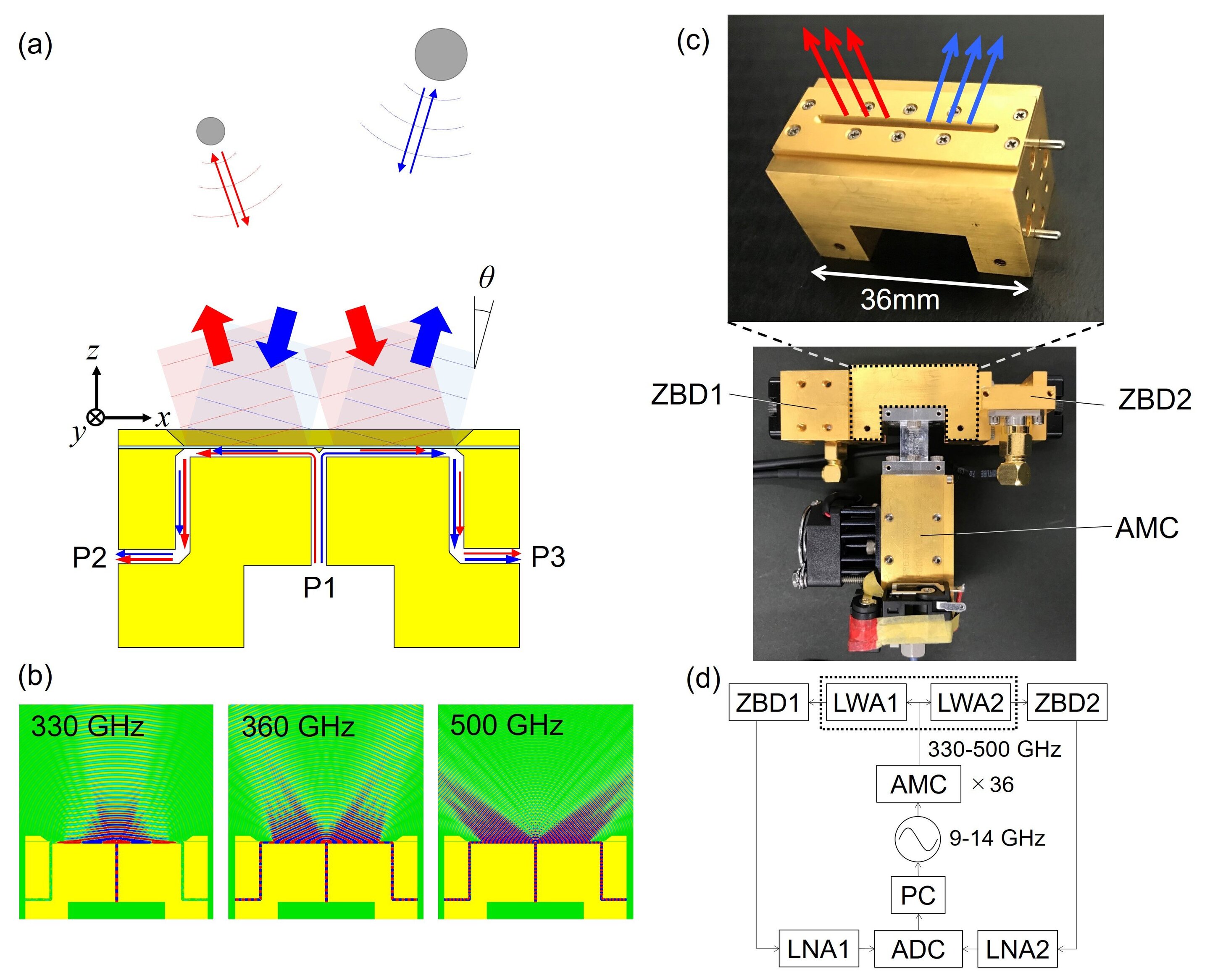February 19, 2020 feature

Researchers at Keio University and the National Institute of Information and Communications Technology (NICT) in Japan have recently introduced a new design for a terahertz wave radar based on a technique known as leaky-wave coherence tomography. Their paper, published in Nature Electronics, could help to solve some of the limitations of existing wave radar.
The use of radar, particularly millimeter-wave radar, has increased significantly over the past few years, particularly in the development of smart and self-driving vehicles. The distance and angular resolutions of radar are typically limited by their bandwidth and wavelength, respectively.
Terahertz waves, which have higher frequencies and shorter wavelengths than millimeter waves, allow for the development of radar systems with a smaller footprint and higher resolution. As wavelengths become shorter, however, the attenuation resulting from wave diffraction rapidly increases.
One way to compensate for this attenuation is by transmitting waves while forming directional beams. While recent advances in semiconductor technology have enabled the creation of terahertz oscillators, multipliers and receivers, there is still a lack in low-loss materials suitable for producing terahertz phase shifters for beam steering and circulators for input/output isolation. This ultimately prevents the development of radar systems with waves in the terahertz range.
"To circumvent this issue, we came up with a novel approach to construct a terahertz radar system without using phase shifters and circulators," Yasuaki Monnai, one of the researchers who led the recent study, told TechXplore. "In our recent study, we proposed a multifunctional waveguide that implements a radar system in one package."

Leaky-wave antennas (LWAs), which are a type of traveling wave antennas, can launch a beam in a direction that changes according to frequency. Monnai and his colleagues proposed an approach to re-design leaky-wave antennas in a way that incorporates two symmetries; one in the excited mode from the center-fed waveguide and one in the directional coupling of the leaky-wave.
They found that integrating a terahertz radar system in such a way enables both beam steering and homodyne detection processes at once. Their design can thus be used to create compact and high-resolution terahertz wave radars that can detect direction and range without the use of phase shifters, circulators, lenses or mechanical scanners.
"The configuration we propose allows back-scatter from a target, which was originally launched from one side of the waveguide, to be captured by the opposing side. The captured wave can then be mixed with a reference wave propagating throughout the opposing side for detection," Monnai explained. "On top of such hardware, we extract the direction, distance and speed of a target by processing the data acquired through frequency sweeping. Our approach paves the way to realizing integrated terahertz radar systems, attaining a significantly smaller footprint and higher resolution than millimeter-wave radars."
The researchers already created a proof of concept based on their design and showed that such a radar could be used to collect contactless heartbeat measurements, detecting displacements of the surface of a person's chest through their clothing. In the future, the radar they developed could have a vast variety of applications, for instance enabling easier, faster, and more hygienic procedures during health check-ups.
"We still have a lot to do on the waveguide (hardware) optimization," Monnai said. "At the same time, we need research and development focusing more on software to filter disturbance in signals, for example, caused by partial wave reflections from clothing and irrelevant body motions. We are also trying to develop techniques that can detect physical and mental health conditions by analyzing a large number of datasets."
More information: Hironori Matsumoto et al. Integrated terahertz radar based on leaky-wave coherence tomography, Nature Electronics (2020). DOI: 10.1038/s41928-019-0357-4
© 2020 Science X Network
Citation: A terahertz wave radar based on leaky-wave coherence tomography (2020, February 19) retrieved 19 February 2020 from https://techxplore.com/news/2020-02-terahertz-radar-based-leaky-wave-coherence.html
This document is subject to copyright. Apart from any fair dealing for the purpose of private study or research, no part may be reproduced without the written permission. The content is provided for information purposes only.
